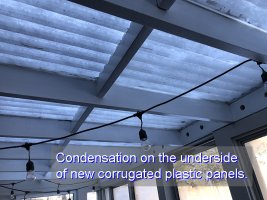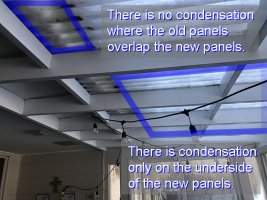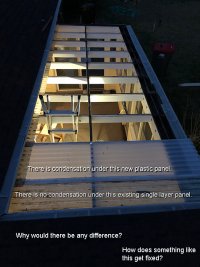BayPointArchitect
Sawhorse
Given situation:
A sunroom had old brittle plastic roof panels that had been walked on and cracked. The edge of the panels were buried deep under the adjacent roof structure and could not be removed without extensive demo work. So a portion of the existing panels were left in place and new panels overlap/underlap the existing.
Questions:
(1) Why is condensation forming only on the underside of the new plastic roof panels and not the existing panels?
(2) Any suggestions on how to solve this problem?
As always, thanks in advance.
ICC Certified Plan Reviewer
NFPA Certified Fire Plan Examiner
A sunroom had old brittle plastic roof panels that had been walked on and cracked. The edge of the panels were buried deep under the adjacent roof structure and could not be removed without extensive demo work. So a portion of the existing panels were left in place and new panels overlap/underlap the existing.
Questions:
(1) Why is condensation forming only on the underside of the new plastic roof panels and not the existing panels?
(2) Any suggestions on how to solve this problem?
As always, thanks in advance.
ICC Certified Plan Reviewer
NFPA Certified Fire Plan Examiner



